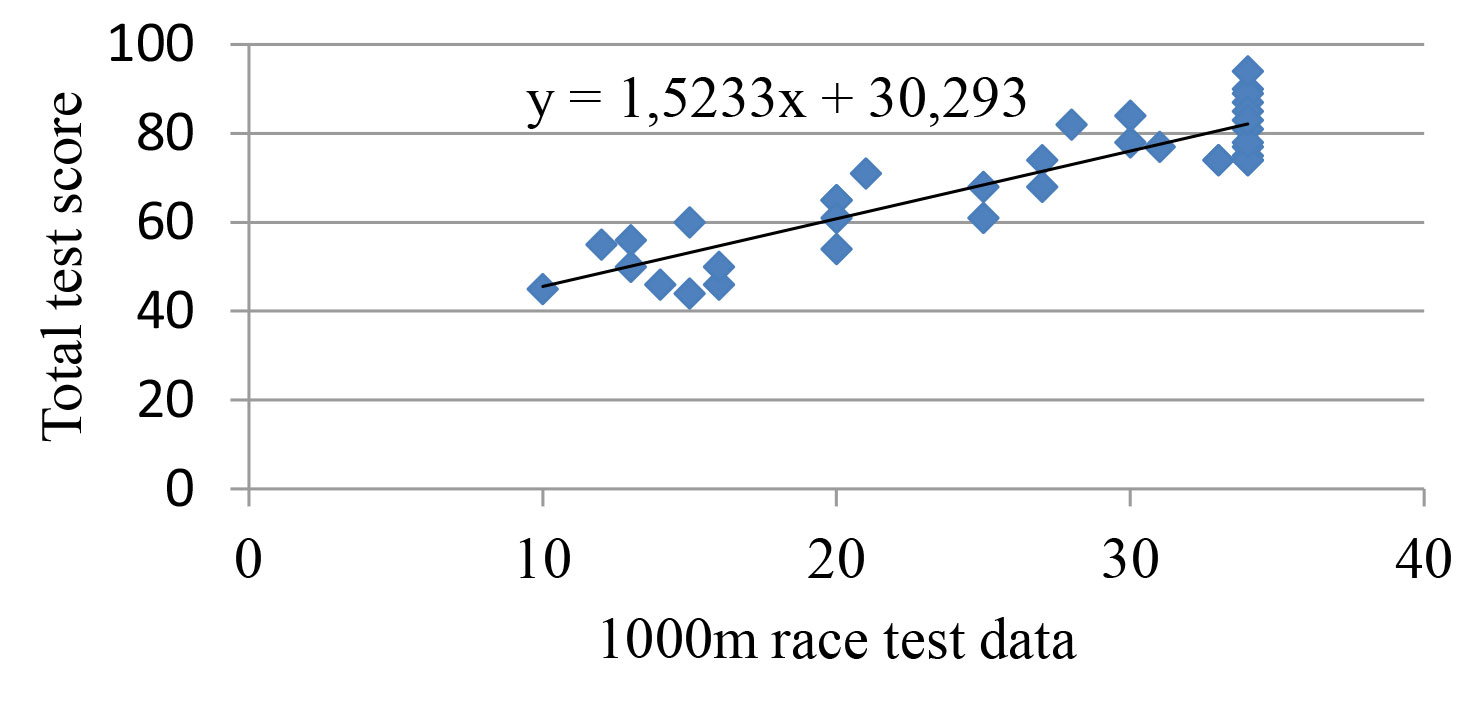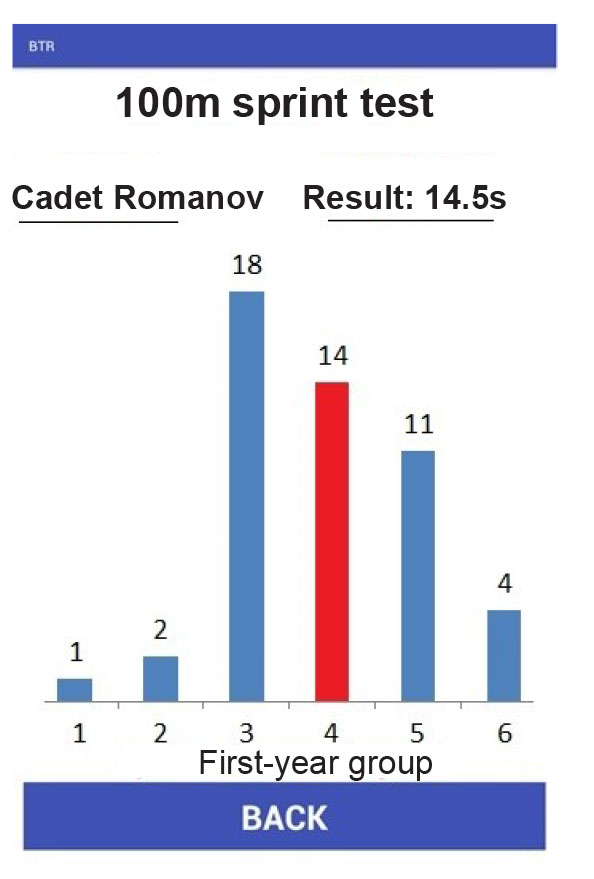Mobile gadgets in academic physical education service: problems and prospects
Фотографии:
ˑ:
PhD, Associate Professor A.V. Minkin1
PhD, Associate Professor A.V. Kostin1
PhD, Associate Professor N.N. Kostina1
1Yelabuga Institute of Kazan (Volga region) Federal University, Yelabuga
Keywords: mobile gadgets, sport standards, training process, correlations, physical fitness tests.
Background. Nowadays multiple electronic gadgets are playing an increasingly important role in every life segment the world over. Civilized life is no longer imaginable without a mobile phone, smart phone, mobile application tools and many other digital systems providing an access to multiple services and information from home. No wonder that the physical education and sport coaching services are being fast transformed with the invasion of mobile equipment into training and progress rating processes [1-5].
Objective of the study was to rate benefits of mobile devices and appliations for the physical educaiton specialist service on the whole and in the tranees’ progress tests in particular.
Methods and structure of the study. The study was performed at Yelabuga Suvorov Military School in September 2017, with 50, 49 and 36 first-, second- and third-year cadets, respectively (total n=135) being subject to the mobile equipment application tests. For the study purposes we used a mobile track race test data recorder, plus two mobile recorders applied in the prone push-ups and pull-ups tests.
To secure the test data collection, processing and analyzing, we developed a special computerized system. The mobile recorder applied in the track race tests was designed using a laser beam reading/ interruption technology; and the prone push-ups and pull-ups test recorders were designed using limit switches. Every mobile test recorder includes a Bluetooth data reception/ transmission unit with AVR microcontroller and mobile Android application to secure instant data flow and processing.
Study results and discussion. The prone push-ups and pull-ups tests are formally rated as optional (interchangeable) GTO Complex tests, and that is why only one of the tests is formally registered at a time in the combined physical fitness test system applied at Suvorov Military School. Please note that we applied both tests under the study albeit formally fixed only one of the test rates in the final accounts. The first-year cadets were tested by the pull-ups, 100m sprint and 1000m race tests. The second- and third-year cadets were tested by the same tests plus the prone push-ups test. The cadets’ fitness standards are fairly close to the relevant age-specific GTO Complex tests with only a few minor differences. Given in Table 1 are the first-year cadets’ test data.
Table 1. First-year cadets’ test data
|
Tests |
Standards |
Actual performance |
|||||
|
Excellent |
Good |
Satisfactory |
Successful tests
|
Failed tests |
|||
|
Excellent |
Good |
Satisfactory |
|||||
|
Pull-ups, reps |
12 |
10 |
8 |
23 |
8 |
14 |
5 |
|
100m sprint, s |
14.3 |
14.7 |
15.6 |
13 |
11 |
23 |
3 |
|
1000m race, s |
3min 30s |
3min 40s |
3min 55s |
7 |
15 |
28 |
- |
The general physical fitness is rated by the total test score that consolidates individual test rates. The total test score was found to closely correlate with the 1000m race test rate albeit the average points in this test are not the highest. The procedure of the widely different test rates being summarized on the same scale has its natural drawbacks, of course, but it should be considered an “inevitable evil” typical for any combined rating method.
Let us now analyze the qualitative and quantitative test data. It is only natural that cadets show progress in every test year after year due to both the natural physiological progress with age and to the systemic physical trainings including habitual morning exercises. It should be noted that the median values were found to differ from the empirical mathematical expectations for every test rate. The closest inter-factor correlation was found for the prone push-ups and pull-ups test data arrays despite the fact that different muscle groups are mobilized in the tests. This finding supports the practice of only one of these tests being formally fixed in the combined physical fitness test reports.
The total test score was found to be in the closest correlation with the 1000m race test data, with the correlation being highly expressed even prior to the interim values being converted to points; and this is indicative of the high practicality of the conversion formula applied. The determination ratio tends to grow for the couple linear correlation of the total test score versus the race test rate with age. The determination ratio was computed to equal precisely 0.72, 0.77 and 0.81 for the first-, second- and third-year cadets, respectively. Despite the third-year sample being limited, the regression equation significance on the whole and statistical significance of the correlation ratio do not show any fall versus the first-year cadets’ test rate. Given on Figure 1 hereunder are the discretional and continuous data arrays for the above correlation.

Figure 1. Linear regression for the total test score versus the 1000m race test rate
In our previous study [2] we applied the mobile run test data recorder to obtain the group-specific test data arrays, with approximation of the bar chart by a smoothing distribution function. We believe that it is beneficial to keep the trainees aware of their test results and ranking as provided by the Sturges’ rule. This awareness is necessary to keep the trainees motivated for progress in the tests and spur their qualifications for the next group within the distribution pattern. For example, the 100m sprint test rate of first-year cadet Romanov was ranked with Group 4. Having examined his result on the bar chart (Figure 2) versus the marginal values, he gets the feel of the progress he should make to qualify for the next group in the 100m sprint test.

Figure 2. Bar chart of the group-specific test data
It should be noted that most of the test leaders attend the relevant sport groups. However, the group sports are limited by certain sport-specific requirements and training systems and, therefore, the sporting trainees are recommended to self-practice for the tests using the above mobile test performance rating gadgets.
Conclusion. Mobile performance rating systems and relevant applications, as demonstrated by the practical experience and tests, are highly beneficial as they facilitate the progress monitoring and statistical processing of the test data. The test data dissemination tools make it possible for the trainees to assess their progress versus peer/ group test performance data to effectively control and manage own physical fitness building process. The mobile test gadgets may be applied by coaches/ instructors and trainees on their own, conditional the test recording and reporting procedures being fair and verifiable enough.
References
- Ignatov D. Velliton nadel pulsometr na sobaku, Karpin raskusil [Welliton wore pulse meter on a dog, Karpin got him pegged]. Site Chempionat.com. Dec. 9 2016 Available at: http://www.spartakmoskva.ru/news/16369.html).
- Minkin A.V., Kostin A.V., Kostina N.N. Mobilnye ustroystva i prilozheniya v organizatsii priema normativov Vserossiyskogo fizkulturno-sportivnogo kompleksa GTO [Mobile devices and software applicable in Russian physical culture and sports GTO complex tests]. Teoriya i praktika fiz. kultury, 2017, no. 8, pp. 34-36.
- Sposob izmereniya vynoslivosti pri podtyagivaniyakh tela v naklone: svidetelstvo no. 238260. Ros. Federatsiya. no. 2008111301/14; zayavl. 24.03.2008; opubl. 27.02.2010 [Method of measuring endurance in bent-over rowing exercises: certificate no. 238260. RF. no. 2008111301/14; appl. 24.03.2008; publ. 27.02.2010]. Byul. no. 6, 1 p.
- Ustroystvo dlya kontrolya otzhimaniy ot pola: svidetelstvo no. 59983. RF. no. 2006115968/22; zayavl. 10.05.2006; opubl. 10.01.2007 [Device to control push-ups: certificate no. 59983. RF. no. 2006115968/22; appl. 10.05.2006; publ. 10.01.2007]. Byul. no. 1, 1 p.
- Ustroystvo I.V. Meskina dlya opredeleniya dliny pryzhka: svidetelstvo no. 1591233, USSR. no. 4230845/12; zayavl. 16.04.1987; opubl. 20.11.1996 [I.V. Meskin's device for measuring jump length: certificate no. 1591233, USSR. no. 4230845/12; appl. 16.04.1987; publ. 11.20.1996]. Byul. no. 32, 2 p.
Corresponding author: avminkin@yandex.ru
Abstract
A wide range of modern gadgets is being increasingly used in every life segment the world over. The study analyzes the modern mobile gadgets applicable in the self-reliant and educator-assisted physical training services with their benefits and drawbacks; reports results of a few tests using three mobile gadgets applied in the military cadets training process in 100m sprint, 1000m race, prone push-ups and pull-ups. The gadgets were found beneficial as they provide excellent opportunities for rating and analyzing individual training progress using relevant mobile application tools; and significantly simplify work of physical education teachers and coaches giving them the means to rate progress of the trainees. However, the mobile gadgets can unlikely be used by the trainees on their own for the reason that their own progress rating reports may not be fair enough and, hence, the coach/ instructor cannot fully trust them – since such progress reports are known to be doubtful even in elite sports, all the more in the academic physical education and sports system.




